Understanding water and bottom quality changes helps manage resulting risks
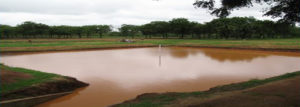
In this article (adapted and summarized from the original publication in Revista Acuacultura – Cámara Nacional de Acuacultura, No. 122, April 2018), I explain how heavy rains during the rainy season have direct and indirect effects on shrimp production in traditional grow-out ponds, how the effects are interrelated, what are the consequences in terms of shrimp health, and what the shrimp farmer producer can do to limit the losses associated with this climatic reality.
Although the latest forecasts from the U.S. National Oceanic and Atmospheric Administration (NOAA) point to a prolonged period of typical “La Niña” conditions, that is, droughts and low temperatures for our part of the world (Ecuador), we will continue to have very strong seasonal rains just like every year. So, the question is: What do these rains mean and how can they affect shrimp production in the short term?
Potentially, the rains can be devastating for the shrimp sector, although many times the subsequent mortalities have not been related to this climatic factor. On both sides of the South Pacific, farmed shrimp mortalities have been reported to be between 3 to 50 percent of cultured populations within three to four days of heavy rains.
Compounding this problem is the fact that indications of imminent mortality are minimal. In this situation, there is no atypical shrimp behavior, nor presence of seagulls or other signs typical of impending production problems. Most cases reported describe a pattern of chronic mortality that could not be detected simply as a function of food consumption.
The following sections describe the physical factors directly associated with rainfall and how these factors influence the behavior of the local ecosystem. It is important to recognize that rain does not only have a direct impact on the chemical profile of the culture medium, but also drastically changes the shrimp pond’s ecological balance during an extended period many days after the rains have stopped.
Direct effects of rain
Rain generally has a temperature of 5 to 6 degrees-C lower than the environment, but it can be much lower if it is associated with massive low-pressure systems. As a result of the dissolution of carbon dioxide (CO2), rain is actually a weak solution of carbonic acid with a pH of 6.2 to 6.4 (in non-industrial areas). These two physical factors tend to lower the temperature and pH of the shrimp ponds. Additionally, as a consequence of dilution, salinity and hardness also decrease due to the reduction in ion concentrations in solution.
Other physical changes directly related to rain include the increase of suspended solids due to the transport of soil material from the pond levies. And this higher pond turbidity negatively impacts sunlight penetration and causes abrupt crashes of the phototrophic populations.
The formation of a halocline (a strong vertical border or salinity gradient between layers of water with different salt contents) in the ponds can often be observed due to the difference in salinity between the rain and the pond water, because the less dense rainwater floats on the saltier pond water.
Buike, rainfall, Table 1
| Parameter | Rainfall effects |
|---|---|
| Temperature | Generally decreases by 3 to 5 degrees-C |
| pH | Initially drops to 6.7 and more afterwards |
| Salinity | Decreases depending on volume |
| Hardness | Decreases depending on volume |
| Turbidity | Increases due to clay particles |
| Dissolved oxygen | First increases, then decreases markedly |
| Hydrogen sulfide (H2S) and ammonia (NH3) | Can increase after 2 to 3 days |
Indirect effects of rain
A chain of events is often observed in which rainfall is only the beginning. There is almost always an abrupt drop (crash) in microalgae populations just after (or during) the rains. This is due to multiple factors, although the factors most involved in this phenomenon are the drop in pH (relative acidity of the rain), the reduction in concentration of minerals and micronutrients, the increase in turbidity and finally the reduction of solar intensity.
Then populations of heterotrophic bacteria – with the role to decompose organic matter – increase exponentially due to the increase in the availability of nutrients from dead algae cells that settle on the pond bottom.
At this time, it is very common to observe a continuous drop in the level of dissolved oxygen (DO) independent of the time. The high biological oxygen demand (BOD) by heterotrophic bacteria and the lack of oxygen production by autotrophic organisms (already dead), can reach a situation of anoxia in a very short time if there are no corrective measures. In addition to consuming available oxygen, bacterial respiration produces carbon dioxide, which dissolves in water and will lower the pH even more.
This chain of events ending with low DO, pH and low temperature conditions creates a very unfavorable environment for shrimp farming. First, these conditions and a very large amount of organic matter are ideal for the proliferation of bacteria with a fast and versatile reproductive strategy (K strategy) that are facultatively anaerobic and can reach domination of the unicellular biota. Vibrios spp typically dominate in these conditions, and, in general, are all potential pathogens, being proteolytic or hemolytic, or both.
And under these same conditions, the sludge oxidation/reduction potential will probably be negative. In other words, all compounds will be reduced under these conditions, including the sulfates. In reductive conditions and low pH, hydrogen sulfide (H2S) is extremely toxic to crustaceans at concentrations that normally would not present problems. Hydrogen sulfide is toxic due to its interference with the metabolic chain of cytochrome a3 oxidation during the aerobic respiration process. The effect is limited to H2S, as the HS- ion does not express toxicity in the normal ranges of shrimp production.
Impact on shrimp health
Temperature
Environmental temperature has a profound effect on the metabolic rate of all poikilothermic organisms (cold-blooded organisms, have variable body temperature similar to temperature of its environment), and shrimp is no exception. Normally, a reduction in feed consumption results of around 10 percent (dry weight) for each degree Celsius lower water temperature. Because, rains can lower pond water temperature by 3 to 5 degrees-C, a minimum, temporary reduction of 30 percent in feed consumption can be expected.
As mentioned before, due to the relatively low density of rainwater a cold layer of fresh water will tend form under the pond’s densest and warmest water. The effect of this pond water stratification or halocline with deeper colder water layers will slow down water heating by the sun. It is important to remove this cold, fresher layer of water or at least homogenize the pond water through some mechanical intervention to minimize the magnitude and speed of temperature change.
In addition to the reduction of appetite, these thermal stratification conditions will make the shrimp migrate towards pond areas with higher temperature and salinity and possibly away from the sound of rain on the pond surface. One consequence is a significant increase in the shrimp density in some deeper pond areas, where dissolved oxygen levels are the lowest and H2S concentrations are the highest in the entire pond. If normal feed rations continue to be applied, bacterial decomposition of feed leftovers will aggravate the situation even more due to depression of pH and increase of BOD by aerobic respiration by heterotrophic bacterial populations.
Acidity (pH)
Rainfall has a pH of 6.5 to 6.7 in coastal Ecuador and shrimp ponds usually have values between 7.5 and 8.5, and a drop of 0.3 to 1.5 can occur during rains. Abrupt die-offs of phytoplankton populations in ponds very often result, although it is important to note that salinity decreases do not entail the same problem and, in fact, the cyanobacteria (blue-greens) dominate under low salinity conditions.
These massive phytoplankton mortalities provide a huge amount of simple sugars to the pond ecosystem as autolysis breaks down cell walls and release the cytoplasm into the water. Within a few hours there typically is an exponential increase of heterotrophic bacteria that begin to assimilate the sugars. But there is a metabolic cost in the consumption of most/all dissolved oxygen available for respiration, before switching to the alternative anaerobic route that is much less efficient. Aerobic respiration also produces carbon dioxide, which after hydrolysis forms carbonic acid, which then depresses the pH even more. So, in a short time the pH disruption caused by the rains can result in a serious situation where the pH will continue to drop until it can the phytoplankton populations are restored.
Dissolved oxygen
Dissolved oxygen (DO) levels are the most critical factor in shrimp production. Its saturation level in water is 25 times lower than for ambient air for the same temperature. Therefore, dissolved oxygen will always be the first limiting factor in the aerobic production of aquatic biomass.
Although decreases in pond water temperature and salinity due to rains increase the maximum capacity (saturation point) of oxygen absorption by pond water, the lack of photosynthesis will be the determining factor regarding the DO levels in the pond. This, combined with the increase in biological oxygen demand (BOD) by heterotrophic bacteria and in the absence of additional (mechanical) aeration, can lower the DO to dangerous levels (equal or less than 3 ppm) in less than half an hour. And low DO levels can increase the reduction of sulfates to sulfites, eventually leading to the production of toxic H2S.
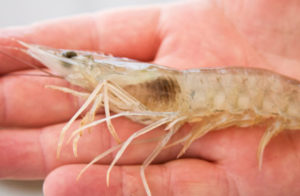
Salinity and hardness
Both salinity and hardness are functions of dissolved ion concentrations, so if there is an increase in the pond water volume, the concentrations of all ions will decrease.
It is unusual for shrimp mortality to be directly related to salinity during grow-out; however, there will be significant effects at the level of the animals’ homeostasis (internal auto-regulation to be in a stable state). The shrimp post-molting phase involves the active absorption of calcium and magnesium ions from their medium to harden their exoskeletons (shells), and this process cannot proceed in the absence of these ions. Consequently, there will be a significant increase in cannibalism and mortality related to secondary infections caused by opportunistic pathogens. These chronic shrimp mortalities are typically not noticed until weeks after the rainfall event, which complicates the situation even more.
Wind and wave action
The wind acting on the surface of a body of water creates waves due to the transfer of kinetic energy from the air to the water. The amplitude and wavelength of the waves (the factors that determine the magnitude of energy transferred) depend on the force of the wind, the duration that blows and the “fetch” or distance on which the wind acts on the surface of the water. Consequently, larger ponds exposed to strong winds for extended periods will have the largest waves.
When they break, waves transfer their energy to the pond levies. The resulting erosion of the most exposed levee slopes increases pond water turbidity and reduces sunlight penetration, which contributes significantly to potential phytoplankton die-offs and all the problems associated with the absence of a healthy microalgae population in the pond.
Another effect is subtler but equally or even more problematic. All earthen ponds have an aerobic microlayer on their muddy bottoms, which normally acts as a barrier between the anoxic subsoil and the relatively oxygen-rich water. This barrier determines the interface between the reductive reactions of the subsoil and the oxidative reactions of the water column. This thin layer of aerobic substrate has limited mechanical strength and is very easy to dislodge by the turbulence associated with wave action. When this happens, the resulting products of the reductive chains – H2S and nitrite – normally trapped in the subsoil can have free access to the water column and can potentially have toxic effects on the shrimp.
Recommended practices to minimize the impact of heavy rains
Before the rains:
- Clean and enlarge the drainage channels. In some cases, it may be necessary to install a pump station at one end of the drainage channel to mechanically discharge rainwater when the level of the river exceeds the level of drainage.
- Place bags of calcium carbonate (500 kg/ha) on the walls. When it rains, the calcium carbonate dissolves and penetrates through the walls, helping maintain the pH and hardness within acceptable pond values. In extreme cases, potassium chloride applications at 100 kg/ha is recommended.
- Repair and compact the slopes of the levies and dykes, and protect the areas of greatest erosion with sand-filled feed bags and with barriers of chopped cane stalks.
- Ensure that all pond drainage gates allow for surface drainage. PVC pipes horizontally buried in the levies at the height of the full pond can increase the efficiency of this type of drainage.
- If the shrimp farm has them, test all aeration equipment and the electrical network installation and control panels. If there is no mechanical aeration installed, I recommend that at least one mobile aerator be secured that can be moved between ponds using a small tractor.
During the rains:
- Drain surface water.
- Measure DO and pH continuously, and if the pH drops, apply calcium carbonate.
- Reduce feeding by 70 percent of the normal ration, and keep reducing it according to the temperature and DO data.
- Turn on all available mechanical aerators and try to maintain DO levels above 4ppm at all times.
- Monitor the health of the pond microalgae by observing samples using a microscope – dead cells can still be green. Healthy algae cells have a full central vacuole and there is no separation between the cell wall and the membrane. If an algae die-off is about to happen, sometimes it can be prevented by pond water exchange to reduce the algae cell density and by raising the pH.
After the rains:
- Apply progressively increasing amounts of aquafeed in the pond as the temperature rises, as long as the pH and DO values are acceptable and the shrimp population is known. It is very important to reconfirm the shrimp population estimate after the rain event. Because shrimp mortality tends to be chronic, daily population sampling should be carried out for at least a week afterwards.
- Add vitamin C, and potassium, sodium and magnesium salts to the aquafeed before feeding.
- Some authors recommend the addition of probiotics (presumably species with a high capacity for decomposing organic matter) in high dosages to prevent the domination of unwanted bacteria. Because of the absence of independent scientific work on this subject, I cannot recommend or not recommend this practice.
- Maintain high levels of aeration until there is a new, stable population of microalgae in the pond.
Conclusions
The overall effect of excess rainfall in a shrimp pond is shrimp mortality to a greater or lesser degree. This population reduction can have several causes, such as anoxia, secondary infections, cannibalism, H2S toxicity and other problems associated with incomplete molting. This mortality commonly occurs two to three days after the rains, without obvious signs such as the presence of seagulls, for example.
Therefore, it is very important that shrimp farm managers understand the processes associated with heavy rains and are prepared to take appropriate actions to limit the economic risk that characterizes seasonal rainfall.
References available from author.
Author
-
Philip Buike
Technical Manager
National Aquaculture Chamber (Cámara Nacional de Acuacultura)
Guayaquil, Ecuador[109,111,99,46,114,111,100,97,117,99,101,45,97,110,99,64,115,97,118,97,110,115,97,117,115,115]
Tagged With
Related Posts
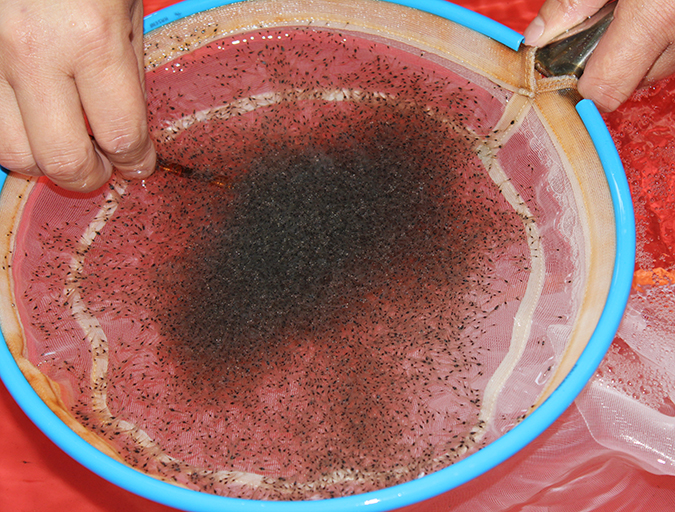
Health & Welfare
Acclimating shrimp postlarvae before pond stocking
Shrimp postlarvae acclimation before stocking into the various growout systems (ponds, raceways, tanks) is a critical – and often overlooked, sometimes taken for granted – step in the shrimp culture process. Various water quality parameters should be changed slowly so that the young shrimp have the time to gradually adapt to the new conditions.
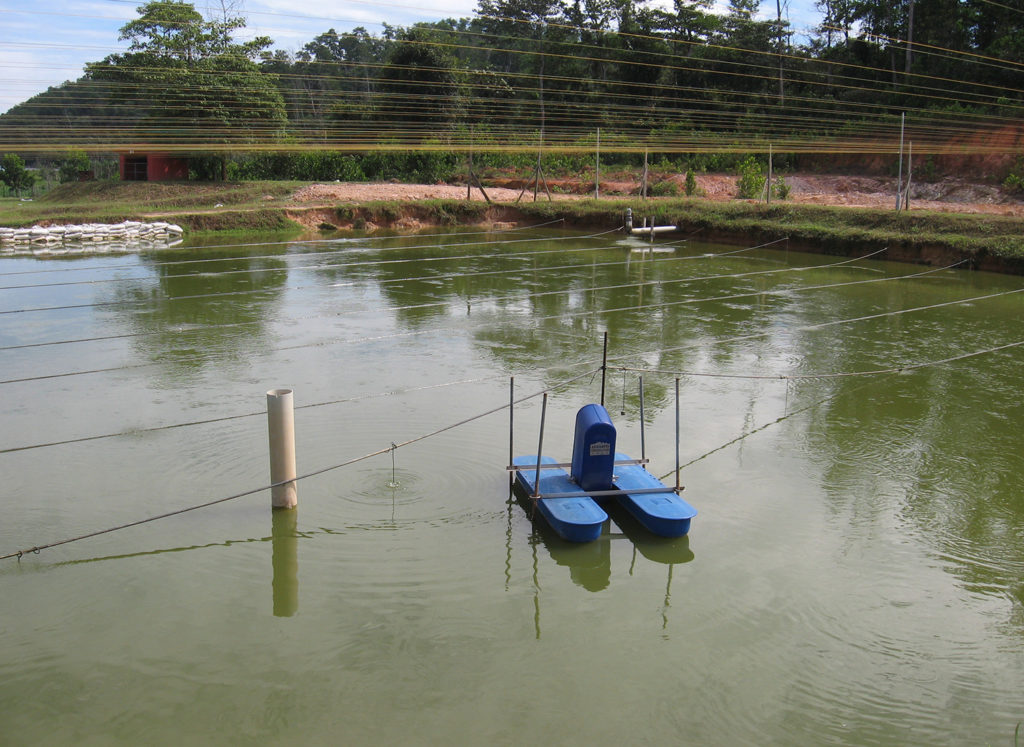
Health & Welfare
Advice for managing predatory birds, part 1
Predatory birds can cause major losses for tilapia farms. As some bird species are protected by law, fish farmers must use non-lethal control techniques.
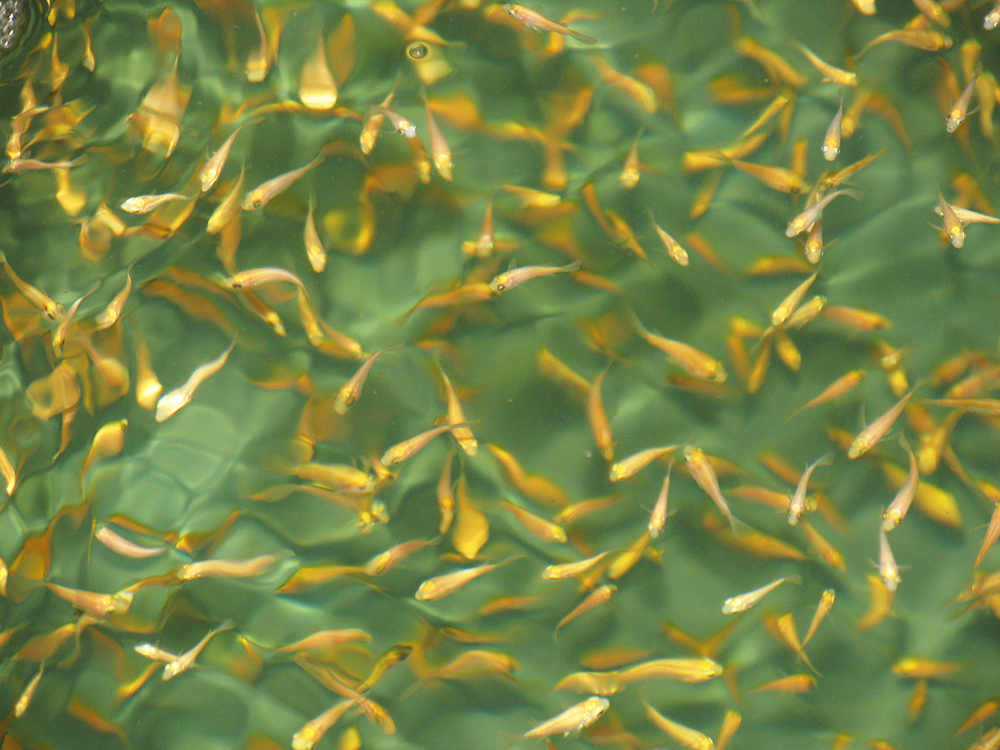
Health & Welfare
Biosecurity practices on fish farms need beefing up
Biosecurity measures and preventive strategies are essential in any biological production chain. Properly planned and implemented biosecurity programs will enhance animal health, production and economics.
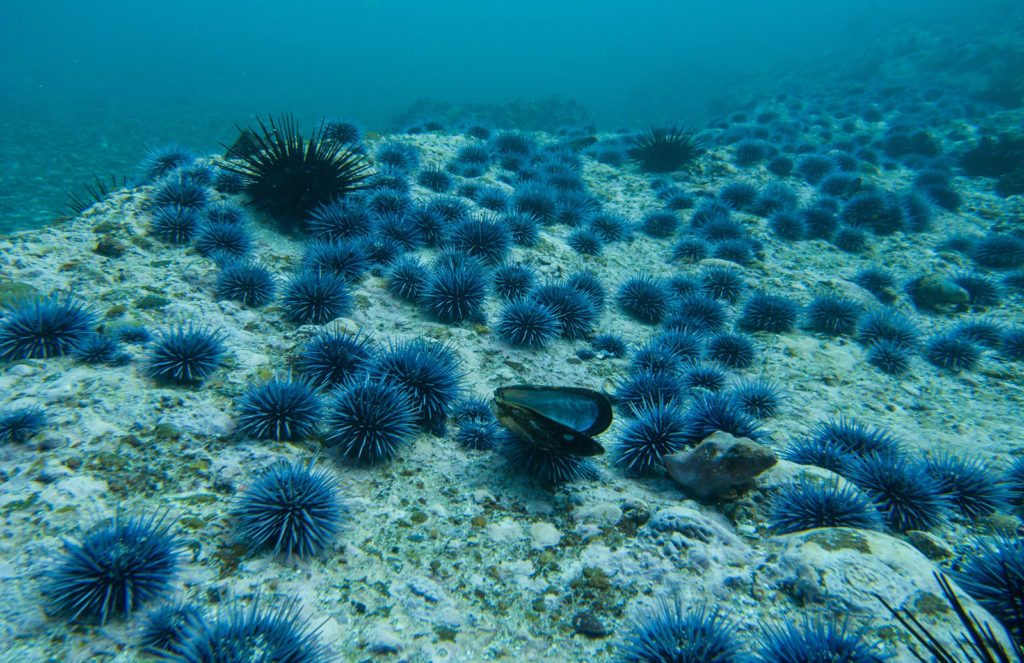
Responsibility
Can ranching ‘zombie urchins’ boost uni, save kelp forests?
With Norwegian knowledge and a partnership with Mitsubishi, Urchinomics aims to turn worthless empty urchins into valuable seafood while restoring kelp forests and creating jobs.


